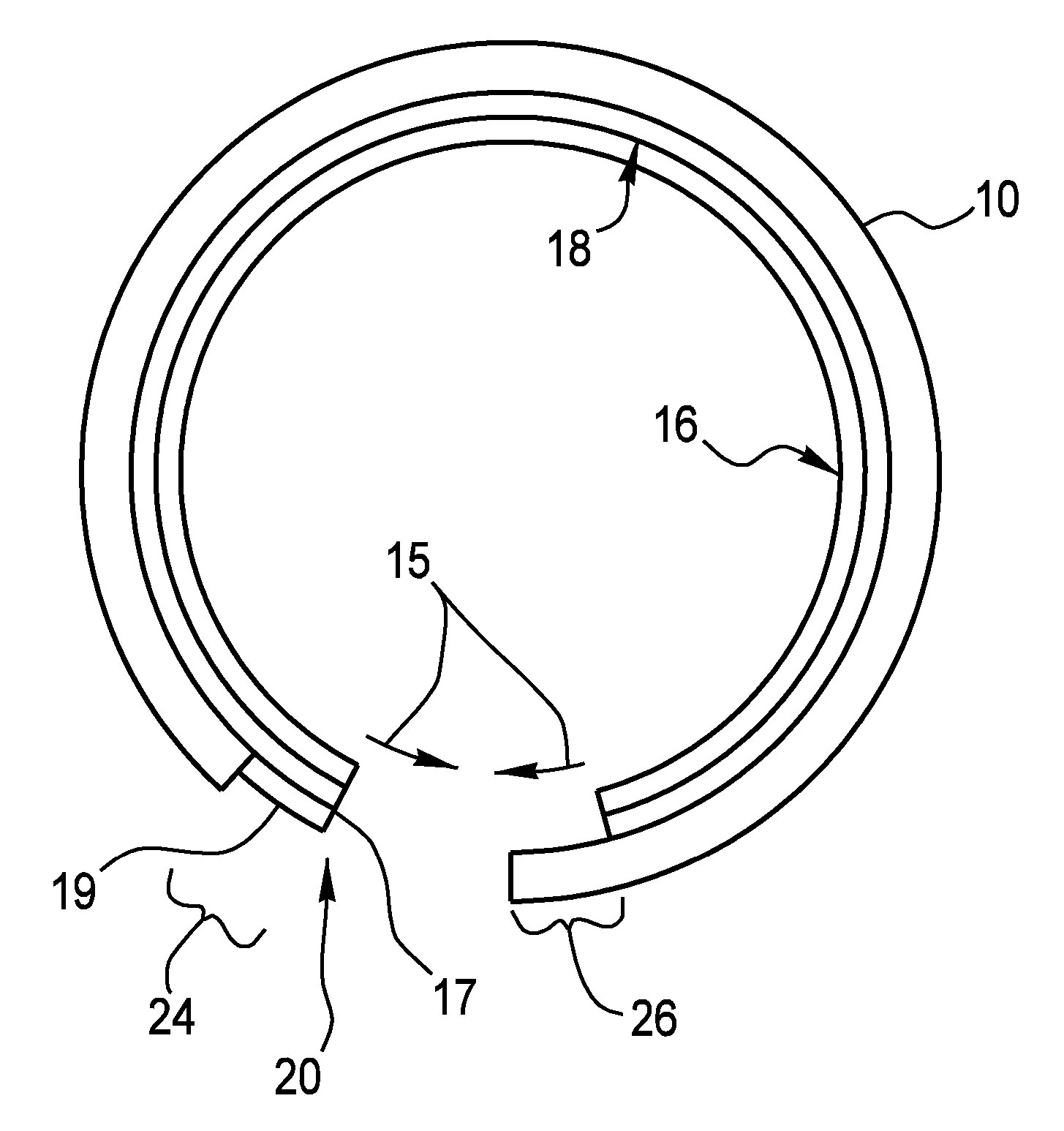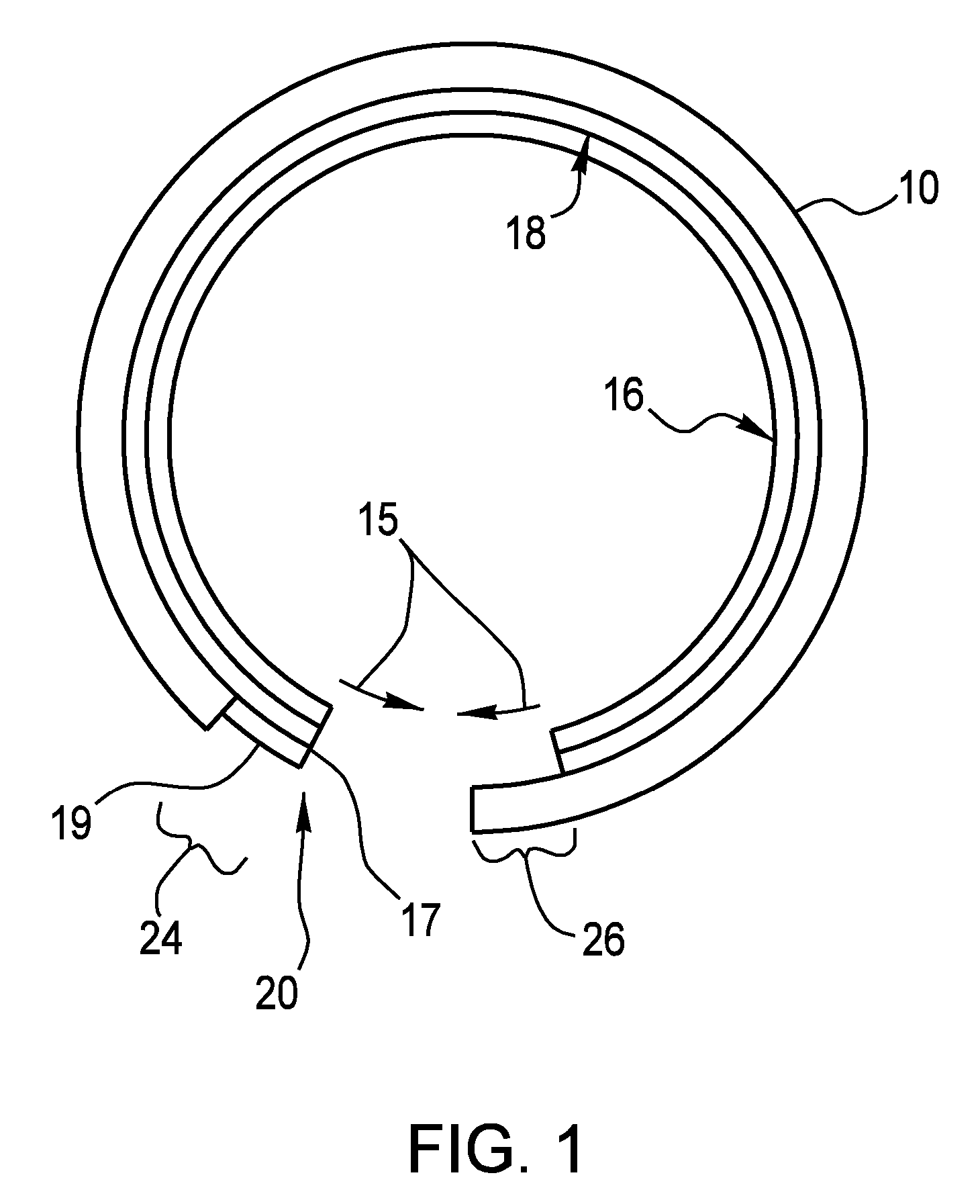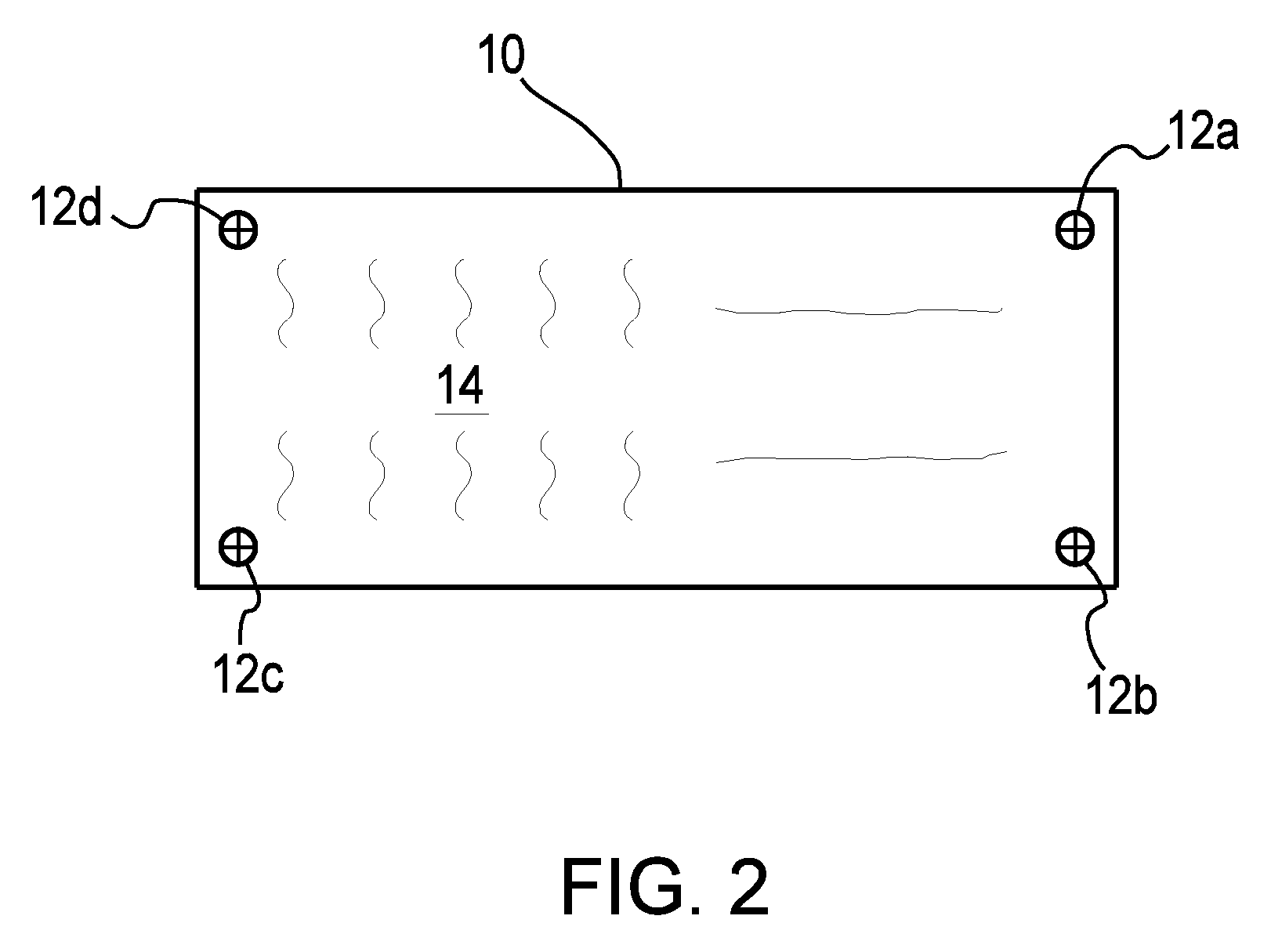System and method for mounting a plate to an adhesive member
a technology of adhesive members and mounting plates, applied in the printing industry, can solve the problems of high sleeve cost per unit, uneven alignment of finished products, and high cost of sleeves, and achieve the effect of removing misalignment or skew caused by improperly aligned printing plates
- Summary
- Abstract
- Description
- Claims
- Application Information
AI Technical Summary
Benefits of technology
Problems solved by technology
Method used
Image
Examples
Embodiment Construction
[0022]The present invention features a novel system and method for forming a photographically or digitally generated printing plate or other generally flat, planar object into a circular sleeve that can then be inserted onto the drum of a printing press or other device. The invention assumes that the printing plate 10, FIG. 2, will have imaged or otherwise placed thereon one or more and preferably four (4) alignment marks 12 in addition to the indicia 14 (text and / or images) to be printed. Although the present invention will be explained in connection with the flexography method of printing, this is not a limitation of the present invention.
[0023]Flexography is a “relief” printing process meaning that the image portion of the plate is raised above the “floor” of the plate (such as a rubber stamp). The “letterpress” method is also a relief printing process whereas offset lithography plates are essentially planar and rely on the chemistry of the printing area. The present invention ap...
PUM
| Property | Measurement | Unit |
|---|---|---|
| width | aaaaa | aaaaa |
| width | aaaaa | aaaaa |
| length | aaaaa | aaaaa |
Abstract
Description
Claims
Application Information
 Login to View More
Login to View More - R&D
- Intellectual Property
- Life Sciences
- Materials
- Tech Scout
- Unparalleled Data Quality
- Higher Quality Content
- 60% Fewer Hallucinations
Browse by: Latest US Patents, China's latest patents, Technical Efficacy Thesaurus, Application Domain, Technology Topic, Popular Technical Reports.
© 2025 PatSnap. All rights reserved.Legal|Privacy policy|Modern Slavery Act Transparency Statement|Sitemap|About US| Contact US: help@patsnap.com



